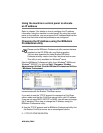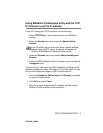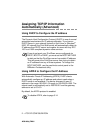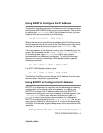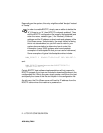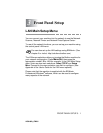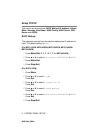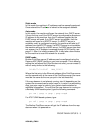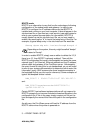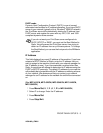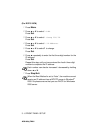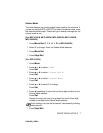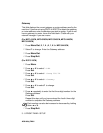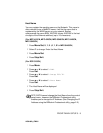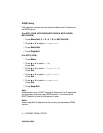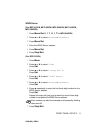
3 - 4 FRONT PANEL SETUP
NC9100h_FM6.0
BOOTP mode
BOOTP is an alternative to rarp that has the advantage of allowing
configuration of the subnet mask and gateway. In order to use
BOOTP to configure the IP address make sure that BOOTP is
installed and running on your host computer (it should appear in the
/etc/services file on your host as a real service; type man bootpd or
refer to your system documentation for information). BOOTP is
usually started up via the /etc/inetd.conf file, so you may need to
enable it by removing the “#” in front of the bootp entry in that file. For
example, a typical bootp entry in the /etc/inetd.conf file would be:
#bootp dgram udp wait /usr/etc/bootpd bootpd -i
In order to enable BOOTP, simply use an editor to delete the “#” (if
there is no “#”, then BOOTP is already enabled). Then edit the
BOOTP configuration file (usually /etc/bootptab) and enter the name,
network type (1 for Ethernet), Ethernet address and the IP address,
subnet mask and gateway of the Print/Scan server. Unfortunately,
the exact format for doing this is not standardized, so you will need
to refer to your system documentation to determine how to enter this
information (many UNIX systems also have template examples in
the bootptab file that you can use for reference). Some examples of
typical /etc/bootptab entries include:
BRN_310107 1 00:80:77:31:01:07 192.189.207.3
and:
BRN_310107:ht=ethernet:ha=008077310107:\
ip=192.189.207.3:
Certain BOOTP host software implementations will not respond to
BOOTP requests if you have not included a download filename in the
configuration file; if this is the case, simply create a null file on the
host and specify the name of this file and its path in the configuration
file.
As with rarp, the Print/Scan server will load its IP address from the
BOOTP server when the printer is powered on.
Depending on the system, this entry might be called “bootps”
instead of “bootp”.



